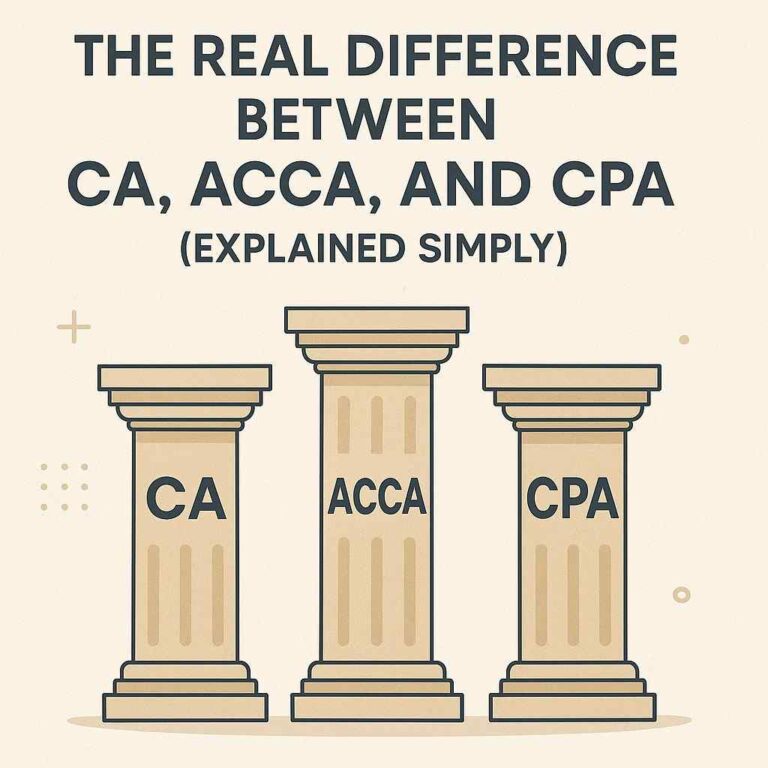Finance is a fast-evolving sector, where handling data, making quick decisions, and automating repetitive tasks have become crucial. One of the most powerful tools transforming this industry is Python, a programming language that has gained tremendous popularity in the finance world. But what exactly is Python for Finance? Why should finance professionals, even those without prior coding experience, consider learning it? This article will explain everything you need to know about Python for Finance in a simple and practical manner.
Understanding Python: The Basics
At its core, Python is a programming language. Think of it as a way to communicate instructions to a computer, so it performs certain tasks automatically. Just like we use languages such as Hindi or English to communicate with people, Python is a language computers understand.
Python is particularly popular because it is easy to learn, versatile, and supported by a massive global community. It is open-source, meaning it is freely available to everyone, with countless libraries (pre-written code packages) that can help accomplish various tasks quickly and efficiently.
What Does “Python for Finance” Mean?
When people say Python for Finance, they usually refer to the use of Python programming language to automate, analyse, and optimise financial tasks and processes.
This can include:
- Automating routine tasks such as data collection, report generation, and emailing.
- Analysing large datasets to identify trends and make data-driven decisions.
- Developing models for risk assessment, portfolio management, or trading strategies.
- Building algorithms that automatically buy and sell stocks based on market data.
In short, Python for Finance is about applying Python’s power to make financial work faster, more accurate, and more insightful.
Why Finance Professionals Should Learn Python
Many people from commerce backgrounds—CAs, CSs, MBAs, B.Com graduates—wonder if programming languages like Python are relevant to them. The answer is a definite yes. Here’s why:
1. Automation Saves Time
Finance professionals spend a lot of time on repetitive, manual tasks such as downloading reports, copying data between files, or sending emails. Python can automate all these tasks with simple scripts, freeing up your time for more strategic work.
2. Reduces Errors
Manual data handling increases the risk of mistakes. A small error in data entry or formula application can lead to incorrect conclusions. Python’s automated processes reduce these errors significantly by executing tasks the same way every time.
3. Handles Large Data Efficiently
Finance work often involves large datasets from stock prices, transaction records, or tax filings. Python can process, analyse, and visualise such data quickly and accurately—far better than manual spreadsheets.
4. Enhances Decision Making
By analysing financial data and visualising trends, Python helps finance professionals make informed decisions faster. It supports predictive modelling, risk analysis, and scenario testing, which are essential in today’s dynamic markets.
5. Keeps You Competitive
The financial industry is rapidly adopting technology. Learning Python keeps you ahead in your career, making you more valuable to employers who want tech-savvy finance professionals.
Common Applications of Python in Finance
To understand the usefulness of Python for Finance, let’s look at some typical real-world applications.
Data Collection and Preparation
Finance professionals often need data from various sources such as stock market feeds, government databases, or client records. Python can automatically:
- Download data files from websites.
- Extract relevant information from emails or PDFs.
- Clean and organise data for analysis.
This eliminates the tedious process of manual data gathering and reduces delays.
Financial Modelling
Python is used to build financial models that predict outcomes like stock prices, cash flows, or credit risks. Libraries such as NumPy and Pandas enable advanced statistical calculations and data manipulation, while SciPy supports scientific computing.
Risk Management
Assessing risk involves crunching large amounts of data. Python allows finance professionals to create models that calculate risk exposure, simulate different market conditions, and estimate potential losses.
Algorithmic Trading
Algorithmic trading means using computer programs to automatically buy and sell securities based on predefined criteria. Python makes it possible to design, test, and implement such trading algorithms. Libraries like Zipline and Backtrader provide platforms for building these algorithms.
Reporting and Visualisation
Python can generate customised financial reports and visualisations. Using libraries such as Matplotlib and Seaborn, you can create charts and graphs that highlight key trends and insights, helping stakeholders understand complex data easily.
Automation of Compliance and Tax Filing
For professionals handling regulatory filings such as GST returns, Python scripts can automate the extraction of data from JSON or XML files and convert them into Excel or PDF reports. This improves accuracy and reduces the manual burden.
Key Python Libraries Used in Finance
Python’s real strength lies in its extensive libraries—pre-built collections of functions and tools that simplify complex tasks. Here are some libraries most relevant to finance:
| Library | Purpose |
|---|---|
| Pandas | Data manipulation and analysis (tables, time series) |
| NumPy | Numerical computations, arrays, and matrices |
| Matplotlib | Creating static, interactive, and animated visualisations |
| Seaborn | Statistical data visualisation based on Matplotlib |
| SciPy | Scientific and technical computing |
| Scikit-learn | Machine learning for predictive analytics |
| Statsmodels | Statistical modelling and hypothesis testing |
| TA-Lib | Technical analysis of financial market data |
| QuantLib | Quantitative finance, derivatives pricing, risk management |
| Zipline | Backtesting trading algorithms |
| Backtrader | Backtesting and trading strategy development |
These libraries allow finance professionals to handle a wide range of tasks without needing to build solutions from scratch.
Who Can Learn Python for Finance?
One of the best things about Python is its accessibility. You do not need to be a software engineer or coder to learn Python. The Python for Finance courses and resources are designed for:
- Finance professionals like Chartered Accountants, Financial Analysts, Investment Bankers.
- Students pursuing commerce, finance, or management degrees.
- Non-coders with zero programming experience.
- Anyone interested in data analysis, financial modelling, or automation in finance.
With consistent practice and the right guidance, anyone can learn the basics of Python and start applying it to their work.
How to Start Learning Python for Finance?
Starting with Python might seem intimidating, but it is easier than you think. Here’s a simple roadmap to get you going:
1. Understand the Basics of Python
Learn the fundamentals such as variables, data types, loops, functions, and control flow. Many free tutorials and video courses are available online specifically targeted at beginners.
2. Explore Python Libraries for Finance
Start with Pandas and NumPy to handle data. Then explore Matplotlib for basic plotting. Gradually add financial libraries as you advance.
3. Practice with Real Data
The best way to learn is by doing. Use publicly available financial datasets to practice data cleaning, analysis, and visualisation.
4. Automate Small Tasks
Try automating routine tasks you do manually—like downloading reports or sending emails. Even simple automation builds your confidence.
5. Join Online Communities
Participate in forums, groups, or courses dedicated to Python for Finance. Sharing knowledge and solving problems with others helps accelerate learning.
Benefits of Python Over Other Tools in Finance
You might wonder why Python is preferred over traditional tools like Excel or other programming languages like R or MATLAB. Here are some reasons:
Simplicity and Readability
Python syntax is clear and intuitive, making it easier to learn and write compared to languages with complex structures.
Versatility
Python is not only good for data analysis but also web development, automation, machine learning, and more, making it a multi-purpose skill.
Large Community and Support
Python has a vast, active user base. This means plenty of tutorials, forums, and pre-built solutions available to solve any problem.
Open Source and Free
Unlike MATLAB or some other tools that require expensive licences, Python is free for anyone to use.
Integration with Other Technologies
Python works well with databases, web APIs, and cloud services, enabling finance professionals to build powerful end-to-end solutions.
Common Misconceptions About Python for Finance
“You Must Be a Coder to Use Python”
This is not true. Many Python for Finance courses start from scratch, assuming zero programming experience.
“Python Is Too Difficult for Non-Technical People”
Python is designed to be beginner-friendly. Many finance professionals learn it successfully with basic computer knowledge.
“Excel Is Enough for Financial Analysis”
Excel is powerful but limited when working with very large data or complex modelling. Python complements Excel and often surpasses it for advanced tasks.
Real-Life Examples of Python in Finance
Case 1: Automating GST Return Processing
A CA firm uses Python scripts to convert JSON files from GST portals into Excel, saving hours of manual effort every month and reducing errors in filings.
Case 2: Portfolio Risk Analysis
An investment manager uses Python to run simulations on portfolio risk and returns under different market scenarios, allowing better decision-making.
Case 3: Algorithmic Trading
A trader develops a Python algorithm that automatically buys shares when certain technical indicators align and sells when targets are met, improving trade execution speed and discipline.
Challenges and Tips for Learning Python
Challenge 1: Overwhelmed by Coding
Start with small, manageable tasks. Focus on learning by doing, rather than memorising theory.
Challenge 2: Lack of Time
Dedicate even 30 minutes daily. Consistent practice beats long but irregular study sessions.
Challenge 3: Debugging Errors
Errors are normal in programming. Use online resources, forums, and debugging tools to understand and fix issues.
Challenge 4: Applying Theory to Finance
Choose projects relevant to your finance work to stay motivated and understand practical applications.
Conclusion
Python for Finance is no longer just a niche skill for software developers. It has become an essential tool for finance professionals who want to work smarter, faster, and with greater accuracy.
Whether you are a Chartered Accountant, a financial analyst, or a student, learning Python can open new doors. From automating tedious tasks to analysing complex financial data, Python empowers you to add value and stay competitive in the evolving financial landscape.
Starting with the basics and gradually exploring finance-specific applications, you can master Python without prior coding experience. The journey requires curiosity, patience, and practice—but the rewards in productivity and career growth are well worth it.
Take the first step today and discover how Python can transform your finance work.
Calling all CA dreamers!
🔴 Are you tired of searching for the perfect articelship or job?
Well, fear no more! With 10K+ students and professionals already on board, you don't want to be left behind. Be a part of the biggest community around! Join the most reliable and fastest-growing community out there! ❤️
And guess what? It’s FREE 🤑
✅ Join our WhatsApp Group (Click Here) and Telegram Channel (Click Here) today for instant updates.




